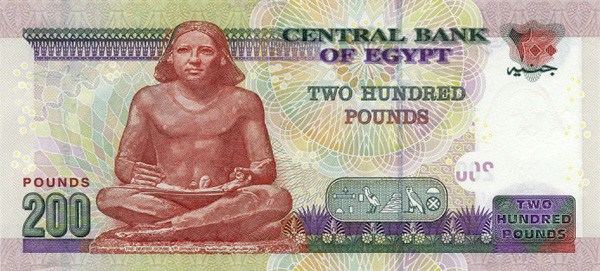Cairo held a lot of intrigue, being our first African city and also the very first leg of our recent epic Europe trip. It’s going to take some time to get to all the major cities we spent some major time in, so enjoy this opening Protips post.
In general
- Learn the numbers. The world might call them Arabic numbers, but in Egypt they’re different. There’s only 10, and they’ll make life so much easier. Don’t worry about pronouncing them, just understanding what they look like.
- Friday is the Muslim day of prayer and public worship – expect less traffic and a (slightly) more sedate vibe. Expect some touristy places to be closed during the early afternoon while many people are at service.
- Egypt is considered a more progressive Muslim country, so tourists need not wear a veil, mask, or headscarf unless they choose to. Dressing modestly is necessary to avoid getting uncomfortable stares, however. Long skirts or loose-fitting jeans will be more comfortable in the heat, and you may be asked to don a head covering at some more conservative mosques or shrines. Men, you’ll have few issues as dressing goes – just keep your shirt on and know when to take off your shoes.
- I SAID, EGYPT CAN BE A VERY LOUD COUNTRY! The horns can get annoying, so bring some ear plugs while sleeping.
- Regarding alcohol: You’d need to visit a more upscale hotel that caters to tourists or discreetly ask around. It’s not illegal, but it wasn’t obvious at many grocery stores. This page on touregypt.net has plenty of info on what to look for, but you can likely forget it during Ramadan.
About money
- Egyptian pounds are not convertible outside the country! Convert your money once in Egypt, and convert it again before leaving – the paper will be virtually worthless once you’ve left.
- As in other countries, bigger bills can be difficult to break. The 200-pound bill you see above (about $25.55 USD) is as big as they come, so aim to carry 20’s, 50’s, and maybe a few 100’s with you.
- While I’ll be using EGP in this post, you’ll commonly see LE (livre égyptienne) around town instead.
- There isn’t a huge black market for currency, and there’s no reason to look for one anyway. Banks and ATM’s are easy enough to find, in any case.
Getting connected
- Forget Vodafone, go with Etisalat. Presuming you rock an unlocked phone, they’ll have a good network with a helpful booth at the airport. Their SIM card worked perfect for Laura’s, while mine… never did. No idea what happened, but she had solid, consistent coverage throughout the city.
- Why not Vodafone? I’m sure it was just an isolated incident, but it took three employees (and one security guard) almost an hour to successfully setup a SIM card for my phone. All of them seemd to lack the basic knowledge of an iPhone (which wasn’t on sale in the store, but still…) They also registered two other SIM cards that didn’t physically fit into the phone, and required me to pay for them despite them not working for my phone… Livid is the only word that comes to mind. Even once everything was set up and working properly, Laura’s connection with Etisalat seemed at least as fast…
- Wi-Fi was spotty in places where it was advertised, so stick with your mobile device or a wired connection where possible.
At the tourist hotspots
- Expect tight security at the major sights (and many of the minor sights). How tight? Airport security tight – expect X-ray machines, bag searches, and possible groping for men. Laura seemed to get a pass unless a female security officer was present, which was very rare.
- Assume you’re paying more for admission. The dual-pricing system is as institutionalized in Egypt as it is in Thailand.
- Once inside, ignore or decline any tour guides. They may well have some decent information, but I’d rather go my own way, thank you very much. Emshi is one way to say ‘go away’ in Arabic if needed.
- While it’s hard to cry ‘conspiracy!’ over small amounts of anecdotal and circumstantial evidence, the places where tour guides were the most prevalent were also the ones that had the least amount of info on-site (I’m looking at you, Egyptian Museum!). The internet has plenty of info, naturally, so no need to resort to reading the dusty typewritten labels.
- For the pyramids, pack LOTS of water. A two-liter bottle per person isn’t too much – we saw no one selling water inside, which seemed very unusual.
- Still give Cairo a chance! Though it may be a polarizing city, Cairo is still very interesting to visit. There is a ton to do here, besides the pyramids – check out Worldtravelfamily’s article on What to do in Cairo for more information!
Food and drink
- While they’re rarely set up to cater to tourists, shops with snacks and drinks are easily found, including plenty of places that squeeze super-fresh orange juice right before your eyes.
- We were big fans of GAD for local food – good price and very fresh, but not the most straightforward system. Order at the cash register, then take your ticket to the appropriate counter. Another good place that looked to have several locations was Felfela, which operated much the same way. A few places around the National Museum were pretty good as well, and some Western franchises are around this same area as a fall-back.
- There’s lots and lots of good food around – as with anywhere else in the world, places with lots of locals inside are probably doing something right.
On getting around
- The metro is kind of a nightmare. Tickets are cheap (1 EGP, or about $0.13 USD, as of Sept. 2015), but the trains are very crowded. Trying to navigate the system can be confusing as well (even more so when a ‘friendly’ local tried to usher us into his friend’s taxi).
- Stations will be closed due to damage, renovation, or reconstruction, and I’m not aware of an English-language resource that keeps up with these. Look to the Wikipedia page on the Cairo Metro for an excellent map, or to English-language news site Egyptian Streets.
- Women-only cars are present on all trains – look towards the middle for their brighter colors.
- No audio announcements are made, but there are some large English-language signs seen on the platform. While on the subway, the crowd may make seeing any maps difficult – ask or know before you get on.
- Regarding crossing the road: I think I know where Frogger got its inspiration from. There are no lily pads around, however, and almost no pedestrian crosswalk signals. My advice: keep a local between you and the oncoming cars.
- Regarding the taxis: metered taxis are reasonably decent. We paid 20 EGP (about $2.60 USD) to ride from near the pyramids to the El Giza metro station, which was about a 15 minute ride in moderately heavy traffic.
- Regarding the buses: there’s a serious learning curve here, and the aforementioned Egyptian numbers are critical. We did successfully ride the bus from a major bus stop near our hotel to within walking distance of the pyramids – a few hundred meters from the Egyptian museum is a large bus stop. It’s more than a bit hidden, however – from the museum entrance, go around to the opposite side of the building. With your back to the museum, look across several multi-lane roads and under the overpasses. Buses 1014, 900, and 337 all look to go to the pyramids, and cost 1 EGP.
- I wish I had learned of Cairo Bus Routes during our trip, but hopefully it will help yours. It’s far from complete (as of September 2015), and still looks to be in beta.
As with all traveling, common sense and awareness go a long way. My Spidey senses began going off whenever someone looked at my wife in a funny way, and I was definitely more on guard while walking around Cairo than I was around most places in Thailand. Check out this post for info on how to avoid scams in Egypt!
Like this post? Like the Facebook page!





